“Let’s hope that the only good things that have come from the current situation are not flushed down right after we will start to live more normally”
Together with Qreator by IQOS, we are going to launch a new events category during this year's edition of Romanian Design Week. It is called DESIGN FLAGS, a series of seven exhibitions that document the evolution of design from international cultural perspectives, which would have been hosted by Qreator by IQOS space.
For the moment we thought of sharing with you the content of these exhibitions, online, here, and also to start a series of interviews with the teams behind them. Thus, we have the opportunity to discover together the ideas and insights that made possible each of these.You’ll be able to see the exhibition offline at Qreator by IQOS in September, during Romanian Design Week 2020.
Presented with the help of the Spanish Embassy in Bucharest, the Hungarian Institute in Bucharest, the Czech Centre, Designmuseum Danmark, CHART, Next Nature and KWY.studio, the seven exhibitions investigate new approaches and concerns in design and present innovative ideas and products that manage to redefine the sphere of which they are part.
In today's interview we talked to Finnish designer Antrei Hartikainen, part of the Matters -Rethinking Materials exhibition.
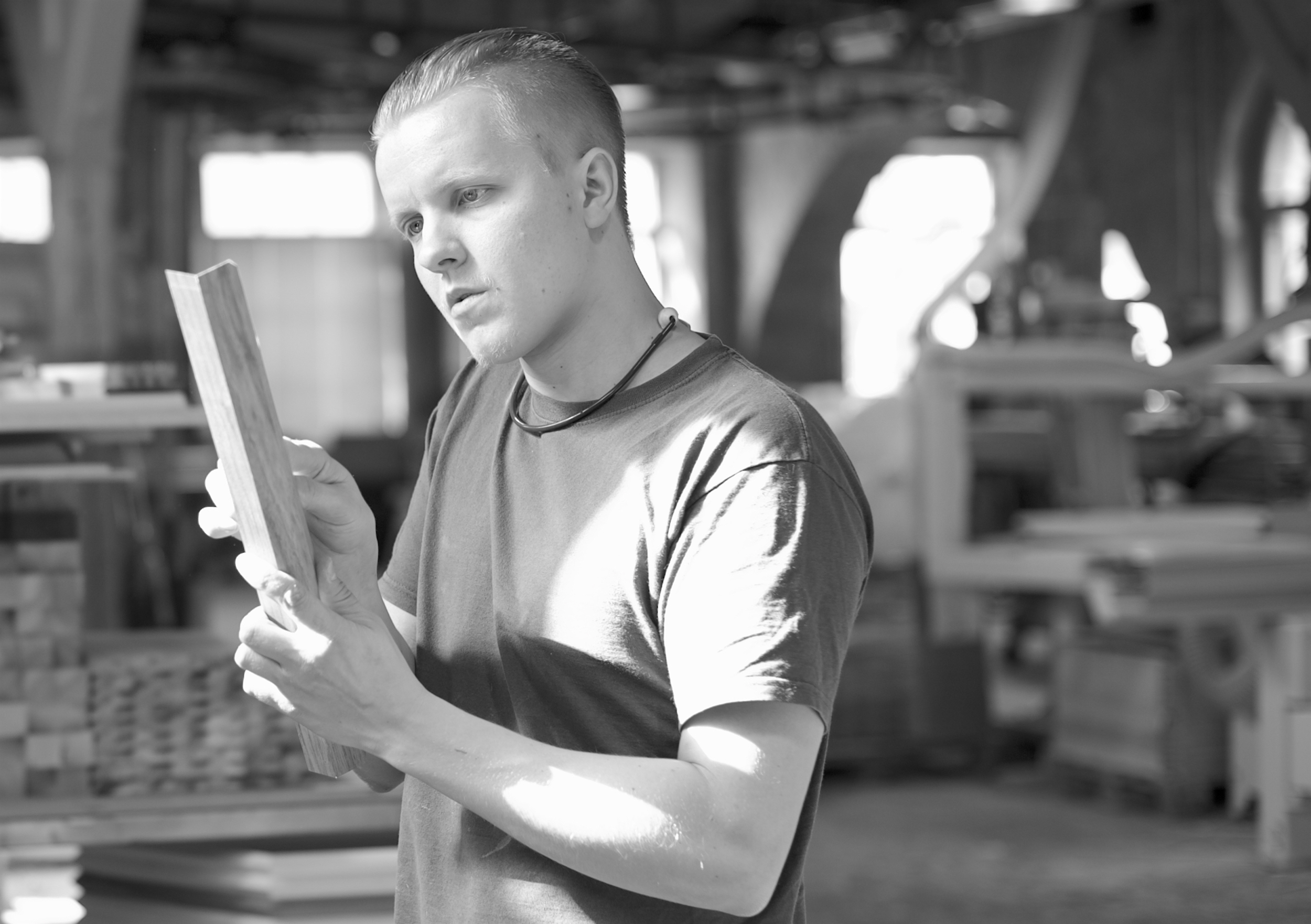
Photo credits: Antrei Hartikainen @Kari Nyyssönen
Developed by CHART in collaboration with the Designmuseum Danmark and curated by Line Ulrika Christiansen (on behalf of CHART) and Pernille Stockmarr (on behalf of Designmuseum Danmark), Matters – Rethinking Materials presents five young designers who each in their own way showcases a visionary approach to rethinking how materials, ranging from synthetic to organic, can shape new conceptual ideas for a more sustainable future of design.
- Tell us a little about your piece, Seitikki, part of the Matters - Rethinking Materials exhibition.
How did it start?
At the beginning of 2019 I started designing the light installation based on my earlier Fiori sculptures for FACTORY exhibition in Fiskars village, Finland.
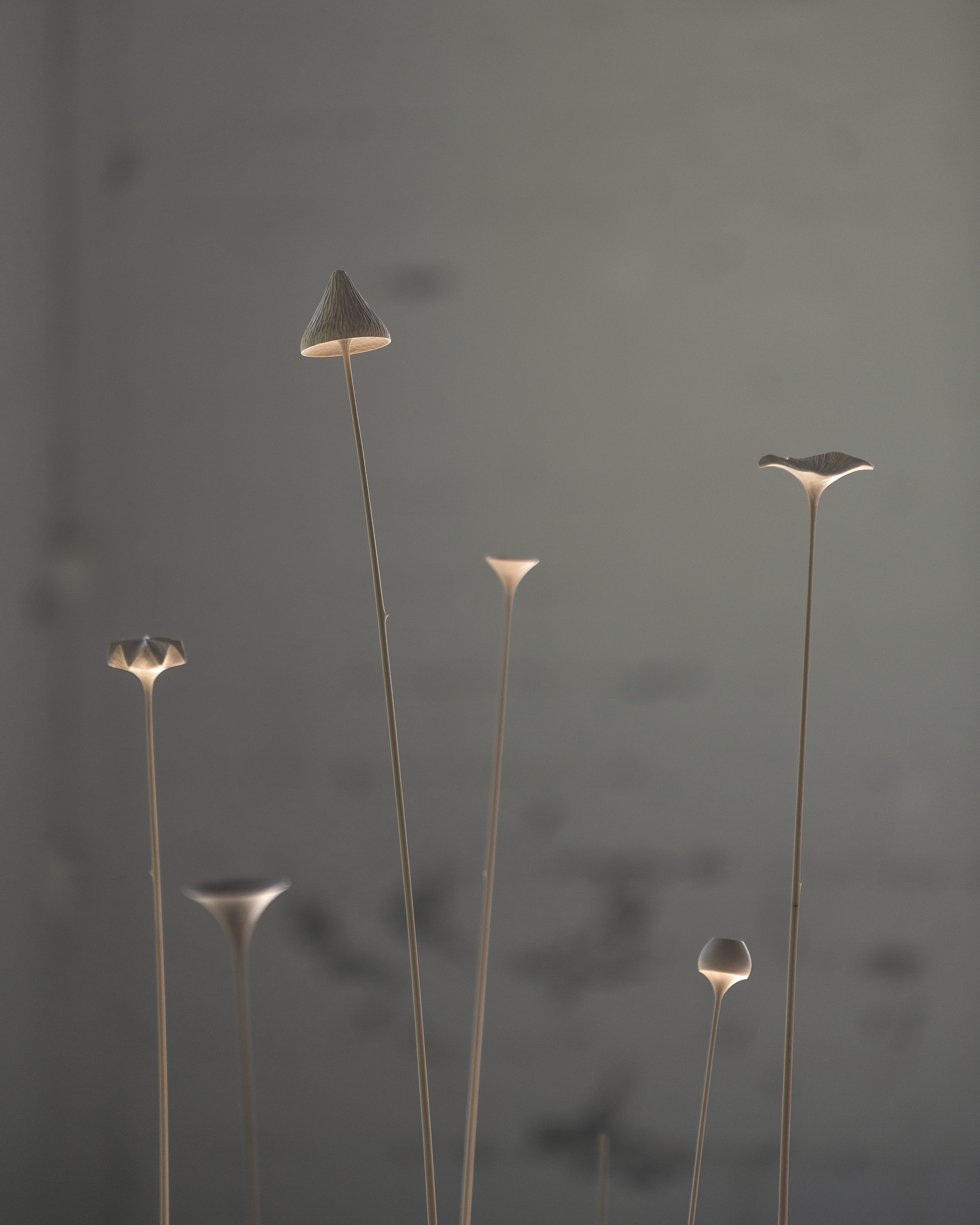
Fiori Sculptures. Photo Credits: Antti-Jussi Rantala
What was your inspiration for it?
For a long time now, I have been admiring mushroom forms and details. It is something mesmerizing that isn’t possible to copy but anyway, I wanted to create something sensitive and fragile based on my thoughts.
What did you aim by developing it?
Finding something new about the material and techniques. Also, how to capture a certain kind of poetic feeling that you can usually sense in the nature.
What is it trying to convey or bring into discussion?
I have tried to search balance between nature and technology, art and design, handcraft and industrial manufacturing. We need to learn from the past but can’t presume either that everything was better before. So how to use modern techniques and technologies without losing the humane perspective.
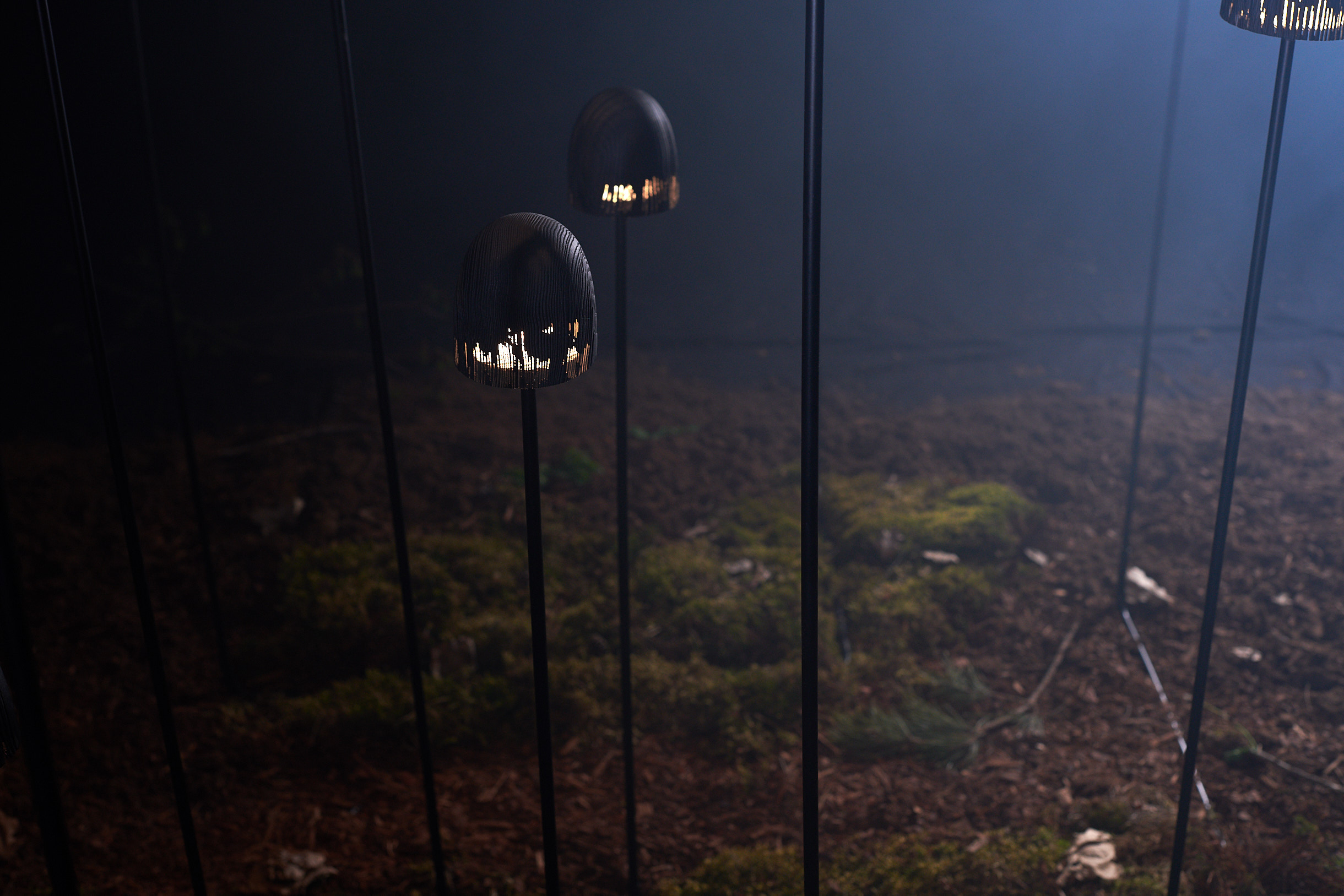
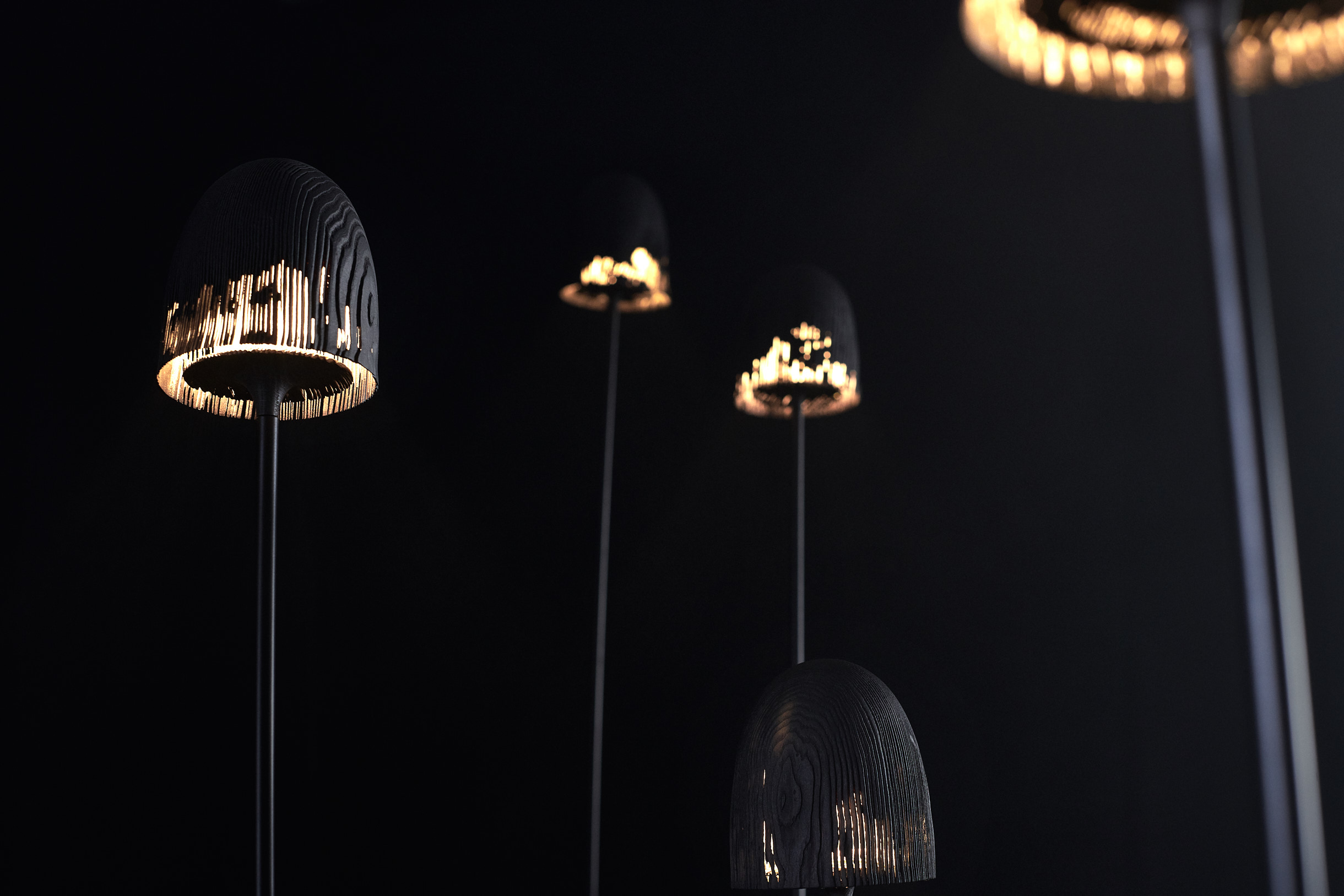 Seitikki. “Matters – Rethinking Materials” – the exhibition is developed by CHART and Designmuseum Danmark and curated by design curator Line Ulrika Christiansen and curator at Designmuseum Danmark, Pernille Stockmarr. Photo credits: Ville Vappula
Seitikki. “Matters – Rethinking Materials” – the exhibition is developed by CHART and Designmuseum Danmark and curated by design curator Line Ulrika Christiansen and curator at Designmuseum Danmark, Pernille Stockmarr. Photo credits: Ville Vappula
How was it to be part of Matters - RETHINKING MATERIALS exhibition?
It has been great to be part of this exhibition, theme and talented group of designers.
- How are we rethinking materials nowadays? Do you believe that it is important for designers to be concerned about new methods of producing or about new materials, when it comes to their practice? And how did you perceive this concern to have evolved in the recent past?
I feel that everyone of us should question the reasons for usinga certain kind of material, technique, or way to do things, be it old or new, in the daily life and also in every design process.
In my work I have mainly focused on one material research, wood. The material itself and most of the working methods are known for ages, but my interest is how we could still find some new perspective to see this old material rather than inventing all the time some new composite materials based on wood.
- Tell us a little about other projects you developed? What is the one you are most proud of?
My creations vary from functional products to pure art works.
Sustainability, innovative use of material features, and beauty itself give the frames for my designs. I create long lasting pieces with honest decisions in the process of designing and making. I want the use of materials, the high-quality craftsmanship, the finished details and the aesthetics itself of my works inspire and delight people.
Probably what I’m most proud of is BASTONE collection, designed and developed for Finnish company POIAT furniture. The collection is a good example of my expertise in designing functional, manufacturable unique looking pieces.
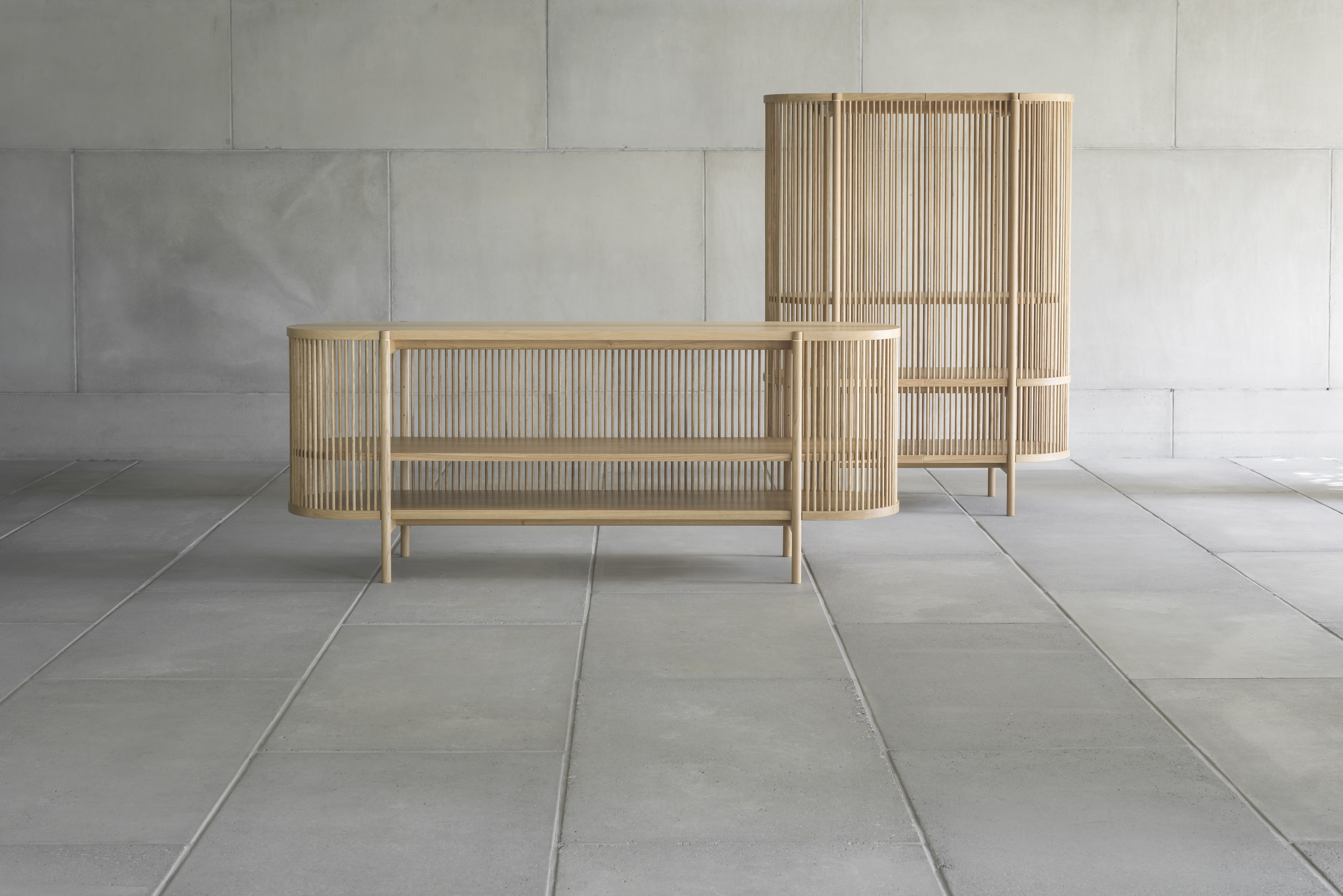
Bastone cabinet
The outside of both the cabinet and the sideboard are partly open, partly covered by long and narrow wooden dowel rods. As light enters through the openings, the interior is revealed but also at the same time remains slightly concealed. The symmetric form enables the Bastone to retain its aesthetic look no matter from which angle one looks at.
- How is Finland creative scene adapting or responding to the current crisis we are all facing?
Here in Finland it seems like we are reacting the same way to the current crisis as the rest of the world.People and companies have shown their solidarity. The oneswho have not been affected so badly from the situation are helping and supporting the others. It has an effect harshly in every corner of the creative scene.
- What do you expect to happen in the design world (and in the world in general), as an adaptation or reaction or (maybe) answer to the current situation? What would you hope to happen?
I hope that we are really starting to recognise the issues that come with over consumption and the results of environment overload. Let’s hope that the only good things that have come from the current situation are not flushed down right after we will start to live more normally.
People will have to get used to living with fewer possessions and travelling less. Also, because global supply chains and transportation networks are so vulnerable, I hope companies put more effort for the local production.
- What would you recommend a creative person as a resource for this period of social distancing and isolation (in terms of activities, books, online courses or other resources).
My recommendation is to do something with your hands and create something haptic, also spending time in nature as much as possible.
- Do you believe that constraints are a drive or necessity for the creative act to happen? And if so, why or how come?
I do believe so. Because of constraints, you are thinking way easier some new solutions to solve the problems or develop things better.
Of course, also too much restrictions will block the creative act to happen. There is a fine line.
- What do you expect RETHINKING or CHANGE to actually mean in the future?
I can imagine that rethinking in the future meanstaking a few steps backwards. Focusing on the things that we really need and care. Authentic materials, food and way of living.
Adapting the technological developments to more human values. Things shouldn’t be as cold as now.
Where you can find him:
https://www.antreihartikainen.fi/
https://www.instagram.com/antreihartikainen/
Design Flags is supported by Qreator by IQOS.
Qreator by IQOS - Home of Creativity is one of the most active promoters and facilitators of creativity in the cultural area of Bucharest. Through the events it organizes or hosts, Qreator by IQOS connects the creative communities of Bucharest with all those passionate about creativity, in all its forms. Qreator by IQOS provides a space where they can express themselves and collaborate, but also the technological resources needed to put their ideas and projects into practice. More information on http://www.qreator.ro and http://www.facebook.com/qreator.
___
Find out more about the Matters – Rethinking Materials exhibition here.
